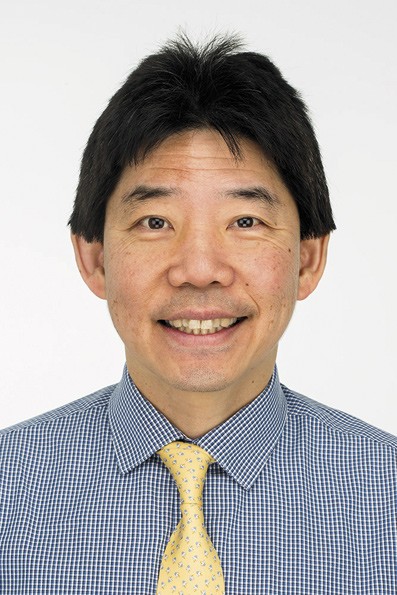
Testosterone replacement therapy (TRT) is for men with pathological hypogonadism due to diseases of the hypothalamus, pituitary gland or testes. A clinical diagnosis of androgen deficiency is confirmed on biochemical testing. In men with pathological hypogonadism, TRT is expected to improve symptoms and signs of androgen deficiency, which may be non-specific (e.g. decreased libido, lethargy, fatigue, decreased energy or endurance, and low mood) or organ-specific (e.g. reduced muscle mass and strength, increased fat mass, and osteopenia or osteoporosis). Efficacy of TRT is gauged by the clinical response, often complemented by serum testosterone concentrations. Potential contraindications and risks are assessed prior to starting treatment and safety of treatment monitored, particularly Hb and PSA.
Pre-TRT risk assessment
Contraindications to TRT include prostate or breast cancer, undiagnosed prostate problems with or without elevated PSA, severe lower urinary tract symptoms, untreated polycythaemia, untreated severe obstructive sleep apnoea, and unstable or inadequately treated cardiac disease.
TRT impairs spermatogenesis so men wanting fertility should have this addressed before treatment.
A recent Position Statement by the Endocrine Society of Australia (ESA) says there is no convincing evidence that men with pathological hypogonadism treated appropriately with TRT had any increased risk of malignant prostate disease. Nevertheless, when there is a substantive risk of pre-existing prostate disease, digital rectal examination and a prostate-specific antigen (PSA) test should be performed before TRT.
Older frail men with pre-existing cardiovascular disease should be optimally managed beforehand.
In short, in men where these are of concern, cardiovascular disease and prostate cancer risks should be assessed before TRT.
Biochemical monitoring whilst on TRT
Monitor FBC for any increase in Hb or haematocrit – the ESA recommends assessment 3 months after initiation of TRT and then annually. Polycythaemia induced by TRT should prompt evaluation for hypoxic conditions e.g. smoking, sleep apnoea or respiratory disease. Any polycythaemia can usually be managed with reduction of TRT dose (and/or frequency) but may rarely require venesection. Routine PSA during TRT screens for prostate cancer.
Testosterone levels can guide TRT adequacy. For daily transdermal formulations this can be measured after 1 week (gel) or 2 weeks (liquid or cream), either prior to (gel or cream) or following (liquid) a morning application. For men on long acting depot IM testosterone undecanoate, test before the following injection (trough level). The aim is to maintain pre-dose or trough levels in the lower part of the reference range for eugonadal men. Testosterone absorption can vary thus personalisation of TRT via dose titration (dose and/or frequency) may be needed.
Assessing efficacy
Men with pathological hypogonadism who are given TRT often report improvement in libido and sexual activity, improvements in lethargy and fatigue, having more energy, and may notice increased muscle mass and strength. Periodic evaluation of bone density can be informative as often this is lower in men with pathological hypogonadism and improves on TRT. Partners of men receiving TRT can provide important insights into the impact of treatment.
Caveats to TRT
The ESA Position Statement noted that there is limited data from high quality RCTs to justify testosterone therapy in older men, usually with chronic disease, who have low circulating testosterone in the absence of hypothalamic, pituitary or testicular disease. (This conclusion is unchanged following the publication of the T Trials sub-studies.)
The cardiovascular effects of exogenous testosterone in middle-aged or older men without pathological hypogonadism remain unclear and further research is needed in this area.
Obesity is not an approved indication for testosterone treatment. Obese insulin-resistant men often have lower testosterone levels (due to reduced pituitary secretion of LH, impaired testicular responses to LH or reduced sex hormone-binding globulin concentrations). In this setting, losing excess weight often increases endogenous testosterone so this is the recommended approach.
Androgen abuse through the use of high doses of androgenic anabolic steroids in the absence of a medical indication has been associated with harm.
Key references (others available on request)
Yeap BB, Grossmann M, McLachlan RI, et al. Endocrine Society of Australia position statement on male hypogonadism (parts 1& 2): assessment and indications for therapy, and treatment and therapeutic considerations. MJA: 2016; 205: 173-178, and 228-231, respectively.
Disclaimer: Please note, this website is not a substitute for independent professional advice. Nothing contained in this website is intended to be used as medical advice and it is not intended to be used to diagnose, treat, cure or prevent any disease, nor should it be used for therapeutic purposes or as a substitute for your own health professional’s advice. Opinions expressed at this website do not necessarily reflect those of Medical Forum magazine. Medical Forum makes no warranties about any of the content of this website, nor any representations or undertakings about any content of any other website referred to, or accessible, through this website.

